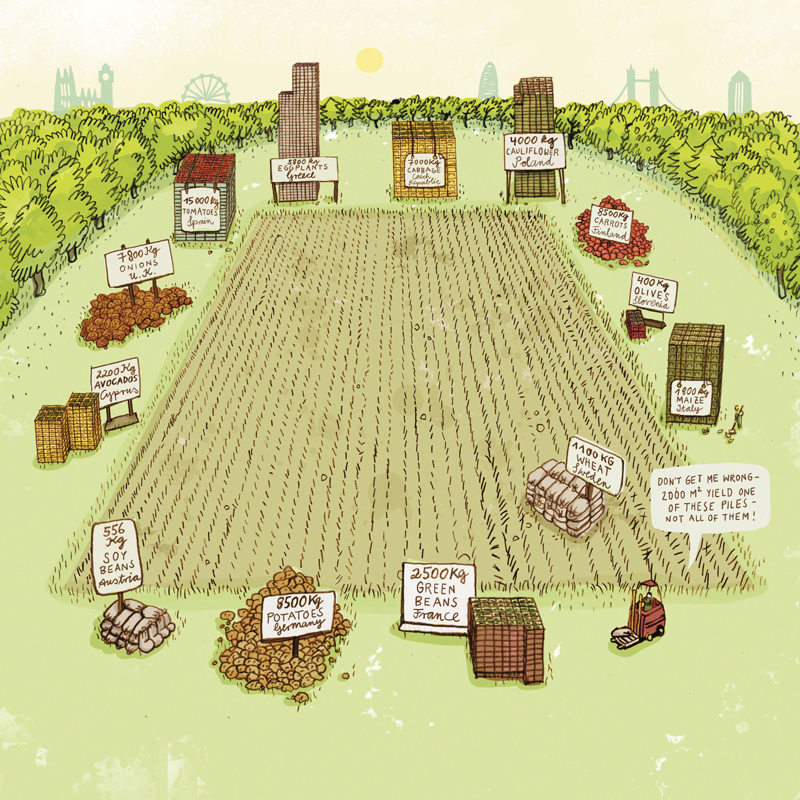It’s unbelievable how much can be grown on 2000m²! Tonnes of avocados, tomatoes, cabbages, carrots, wheat and potatoes could be harvested. But who is supposed to eat all of that? The answer to this lies in a mixture of things. In addition, crop yields vary considerably, regionally and from year to year.
When it comes to vegetables, there is a difference between whether they are grown on the field or in a greenhouse. For example, in Belgium and Holland they keep a record of tomatoes per square metre as almost everything is grown in greenhouses all year round, with correspondingly high costs of energy and fertilizers. In other regions, harvest only takes place during the appropriate season, or more is grown in fields.
Maximum yield per unit area is usually associated with a high use of artificial fertilizers, and often pesticides too, so it is in no way ecologically friendly.
Useful Links
![]() The Farming Systems Trial – A long-term side-by-side comparison of organic and conventional farming showing that organic yields match conventional yields and even outperforms them in years of drought. Rodale Institute (2013).
The Farming Systems Trial – A long-term side-by-side comparison of organic and conventional farming showing that organic yields match conventional yields and even outperforms them in years of drought. Rodale Institute (2013).
![]() System of Rice Intensification – An agro-ecological methodology for increasing the productivity of irrigated rice by changing the management of plants, soil, water and nutrients
System of Rice Intensification – An agro-ecological methodology for increasing the productivity of irrigated rice by changing the management of plants, soil, water and nutrients


